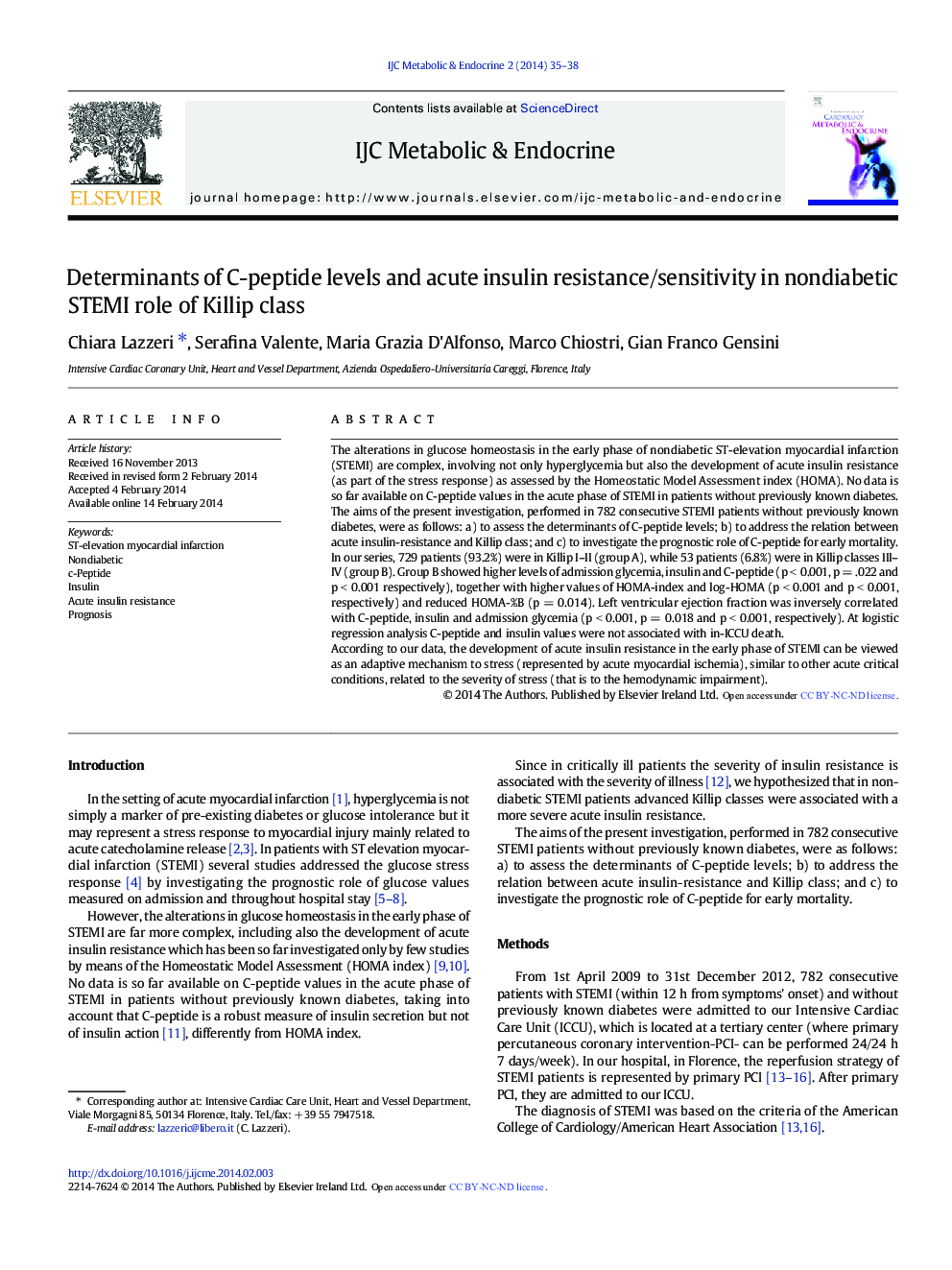| Article ID | Journal | Published Year | Pages | File Type |
|---|---|---|---|---|
| 2927301 | IJC Metabolic & Endocrine | 2014 | 4 Pages |
The alterations in glucose homeostasis in the early phase of nondiabetic ST-elevation myocardial infarction (STEMI) are complex, involving not only hyperglycemia but also the development of acute insulin resistance (as part of the stress response) as assessed by the Homeostatic Model Assessment index (HOMA). No data is so far available on C-peptide values in the acute phase of STEMI in patients without previously known diabetes.The aims of the present investigation, performed in 782 consecutive STEMI patients without previously known diabetes, were as follows: a) to assess the determinants of C-peptide levels; b) to address the relation between acute insulin-resistance and Killip class; and c) to investigate the prognostic role of C-peptide for early mortality.In our series, 729 patients (93.2%) were in Killip I–II (group A), while 53 patients (6.8%) were in Killip classes III–IV (group B). Group B showed higher levels of admission glycemia, insulin and C-peptide (p < 0.001, p = .022 and p < 0.001 respectively), together with higher values of HOMA-index and log-HOMA (p < 0.001 and p < 0.001, respectively) and reduced HOMA-%B (p = 0.014). Left ventricular ejection fraction was inversely correlated with C-peptide, insulin and admission glycemia (p < 0.001, p = 0.018 and p < 0.001, respectively). At logistic regression analysis C-peptide and insulin values were not associated with in-ICCU death.According to our data, the development of acute insulin resistance in the early phase of STEMI can be viewed as an adaptive mechanism to stress (represented by acute myocardial ischemia), similar to other acute critical conditions, related to the severity of stress (that is to the hemodynamic impairment).
